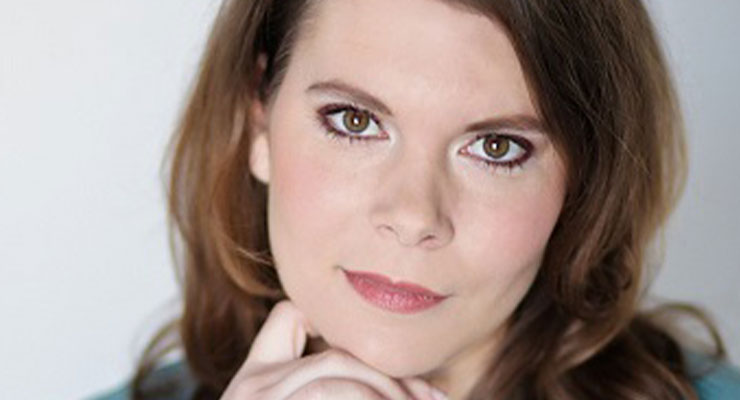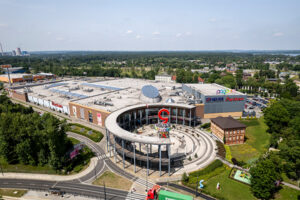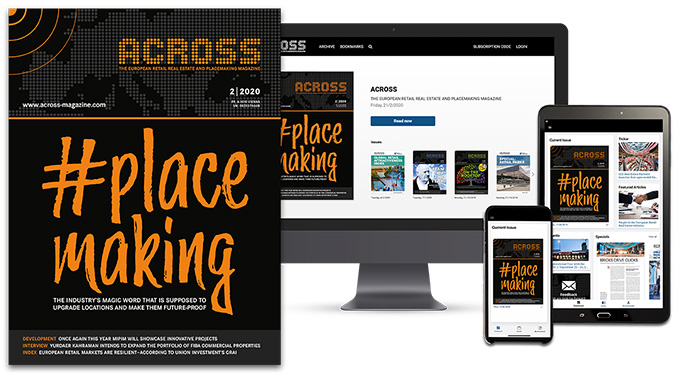ACROSS: YOU ARE ORGANIZING A MAJOR OUTLET CONFERENCE IN PARIS AT THE BEGINNING OF APRIL. WHAT ARE THE KEY ISSUES THAT ARE DRIVING THE INDUSTRY?
CAROLINE LAMY: The 10th Magdus Pan-European outlet event will be held in Paris on April 1st and 2nd. The first day will be a conference day, and the second day will be an exclusive tour of the McArthurGlen Paris-Giverny Outlet. Increasing attractivity and renewal offers like hybridization (F&B, leisure) are key goals for all outlet players: investors, developers, and retailers. The conference’s main topic is “Outlets: what next?”. Changes in the retail industry, especially in the outlet sector are moving fast, and flexibility and anticipation of the retailers’ and consumers’ needs are the key to success!
ACROSS: WHAT CURRENT “NEEDS” DO YOU SEE ON THE RETAILER SIDE IN PARTICULAR?
LAMY: Retailers are looking for a collaborative approach with developers. This applies to settlements and outfits, events and loyalty policies, and hiring and training performing sales teams. Furthermore, they seek flexibility regarding leasing contracts (first or renegotiated ones, short or long-term contracts) and data to better understand the consumer’s shopping trends and expectations and improve their stores’ profitability.
ACROSS: WHAT GENERAL TRENDS NEED TO BE CONSIDERED IN THE OUTLET SECTOR?
LAMY: With the development of digital retail and the second-hand industry, outlet centers must reinvent and enrich their offer to stay attractive. Relevant actions are optimizing store sizes, creating a wide range of offerings, from mass market to premium and even luxury in some instances, qualitative F&B offerings, leisure and physical offerings, etc.
ACROSS: LOOKING AT THE EUROPEAN MARKET: WHICH PROJECTS/DEVELOPMENTS IN THE EUROPEAN OUTLET SECTOR ARE CURRENTLY THE MOST EXCITING FROM YOUR POINT OF VIEW?
LAMY: After a slow pace of openings since the pandemic, with no openings recorded in 2022, only one in 2023 and two in 2024, and some abandoned projects, the European Outlet industry is alive and kicking with numerous openings and expansions planned for the next two years! Here in the UK, two openings and extensions are in the pipeline for 2025-26 – these are interesting because they will provide a new and different offer in a historic and pretty saturated market. Projects in Eastern Europe will take place in Poland, Georgia, Bulgaria, and Croatia for the next two years, and we will see if retailers are responsive to these markets. It will also be interesting to discover the retailers who gamble in this underequipped market and whether consumers will adopt the outlet concept in Northern Europe and Sweden.
ACROSS: DESPITE EVERY EXPERT STATING THAT
EUROPE IS A SATURATED MARKET FOR OUTLETS, IN WHICH EUROPEAN REGION DO YOU STILL SEE THE MOST DEVELOPMENT POTENTIAL FOR NEW OUTLETS?
LAMY: In France, the Southeast part of the country is still an attractive region. A new project will be revealed during the next Magdus outlet event! Brittany is virgin territory for outlet schemes, but the opposition of the city center retailers is still strong. According to the Ecostra and Magdus survey held yearly with European retailers, France and Germany have been the main targeted markets for most of them for many years.
ACROSS: SOME INDUSTRY PLAYERS ARE EXPANDING OR COMBINING THE OUTLET CONCEPT WITH OTHER ASSET CLASSES. HOW DO YOU ASSESS THE MIX BETWEEN FULL-PRICE AND OFF-PRICE STORES, E.G., HALF-PRICE FORMATS IN SHOPPING CENTERS?
LAMY: The hybridization of outlet schemes starts in the USA with a mixed offer of full-price and outlet, but other combinations could also be seen with F&B and leisure offers, as well as residential or health services offers. The goal is to offer facilities to transform outlet centers into “living centers” or “places of life” and drive footfall, especially during the week.
ACROSS: FREY TALKS ABOUT OPEN-AIR SHOPPING DESTINATIONS, FOR EXAMPLE. WHAT IS THE APPEAL OF SUCH A FORMAT?
LAMY: Open-air outlet villages are a successful format in Europe. Consumers dislike being “locked” in buildings with artificial lights. They want a fantastic “day out” shopping experience! Open-air villages with amenities like plots with terraces, children’s playgrounds and event areas, trees and flower gardens, and Premium hospitality services are the new standards in the industry.
ACROSS: HOW WILL THE ROLE OF GASTRONOMY AND ENTERTAINMENT IN THE OUTLET SECTOR CONTINUE TO CHANGE?
LAMY: Most outlet centers lack qualitative and sufficient F&B and entertainment offerings. Developers are working hard to solve this problem. However, some F&B and entertainment players are still considering opening in outlet schemes that do not have sufficient footfall during the first days of the week or after closing shop times. This is still a brake on changes.
ACROSS: WHICH F&B AND LEISURE CONCEPTS WORK PARTICULARLY WELL IN THE OUTLET SECTOR? WHERE DOES THE INDUSTRY STILL HAVE SOME CATCHING UP TO DO?
LAMY: Mid-scale F&B and leisure offers for families have historically performed well in the sector, but adult consumers are looking for more fancy or “slow food” restaurants.
ACROSS: WE USUALLY TALK ABOUT THE BIG NAMES WHEN DISCUSSING DESIGNER OUTLETS. NEVERTHELESS, THERE IS A WHOLE RANGE OF SMALL LOCATIONS, SOME OF WHICH OFFER A SIGNIFICANTLY
REDUCED PRODUCT MIX. HOW DO YOU ASSESS THE ROLE OF SMALL LOCATIONS?
LAMY: Retailers are primarily looking for big outlet schemes with huge footfalls, but small locations could answer retailers’ expectations, like collaborative relationships, fitted catchment areas, consumer profiles, etc. Desirability is not a question of square feet, even if it is true that a size of 15,000 sq m and more is the key to ensuring a sufficient catchment area.

Caroline Lamy
Caroline Lamy is CEO of Magdus and the CL Outlet Consulting Company






